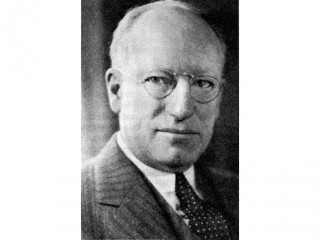
Edward Murray East biography
Date of birth : 1879-10-04
Date of death : 1938-11-09
Birthplace : Du Quoin, Illinois
Nationality : American
Category : Science and Technology
Last modified : 2011-03-15
Credited as : geneticist, botanist and agronomist,
Edward Murray East, an American plant geneticist whose experiments led to the development of hybrid corn, also made distinguished contributions to genetic theory.
Edward M. East was born on Oct. 4, 1879, at Du Quoin, III. After high school he worked in a machine shop and in 1897 entered the Case School of Applied Science in Cleveland, Ohio. A year later he transferred to the University of Illinois, graduating with a bachelor of science degree in 1901. In 1903 he married Mary Lawrence Boggs.
East became interested in the new field of genetics. As assistant at the Illinois Agricultural Experiment Station, he analyzed the protein and fat content of Indian corn grown under an experimental breeding program. After receiving his master of science degree at Illinois in 1904, he became an agronomist at the Connecticut Agricultural Experiment Station at New Haven for 4 years. He worked mainly with corn and tobacco but continued his earlier studies with the potato, incorporating these in his doctoral thesis for the University of Illinois in 1907.
Continued experiments on the effects of inbreeding in corn, together with independent work at the nearby Carnegie Institution for Experimental Evolution, finally led East to the development of hybrid corn. This new method of seed production revolutionized corn growing throughout the world.
In 1909 East joined the faculty of the Bussey Institution of Harvard University (later reorganized as a graduate school of applied biology). He continued his corn and tobacco experimentation at the Connecticut Agricultural Experiment Station but also began more theoretical work. He discovered (independently of a Swedish plant breeder) the phenomenon later known as "multiple factors" which provides a Mendelian interpretation for "blending inheritance," previously thought outside of Gregor Mendel's laws. East also made distinguished studies of self-and cross-incompatibility, heterosis, cytoplasmic heredity, and hybridization.
East's work during World War I with the National Research Council and the U.S. Food Administration aroused his interest in the implications of biology for world problems and human affairs. He wrote two popular books warning of impending disaster if the exponential increase in world population was not quickly halted.
East served as president of the American Society of Naturalists (1919) and of the Genetics Society of America (1937). He was a member of the American Philosophical Society and the National Academy of Sciences. He died on Nov. 9, 1938, in Boston.
















